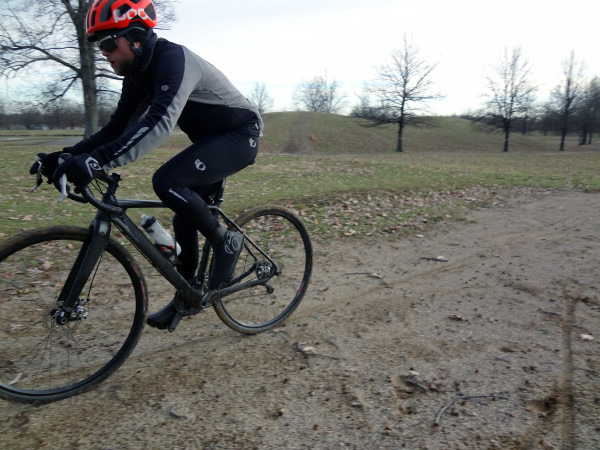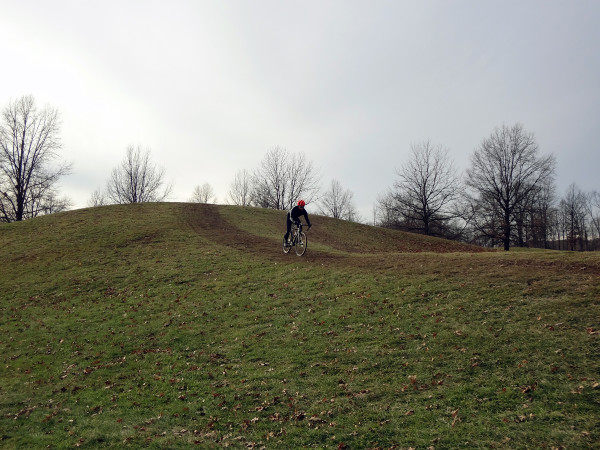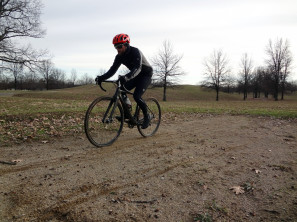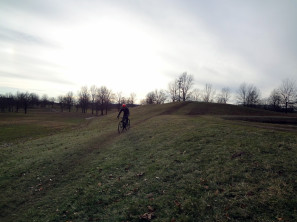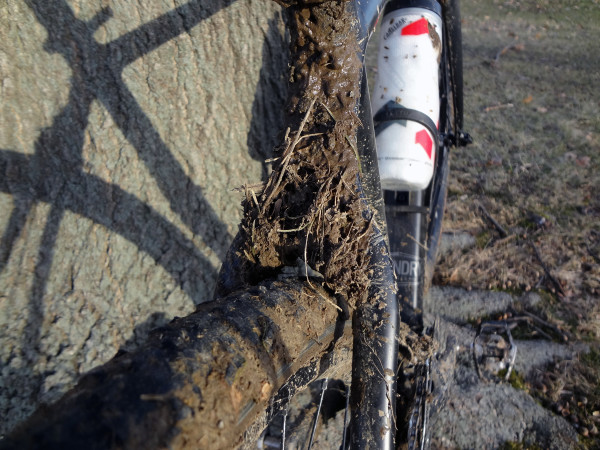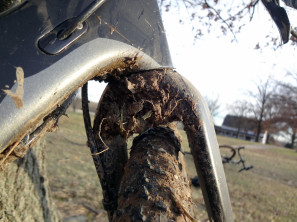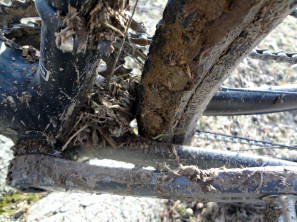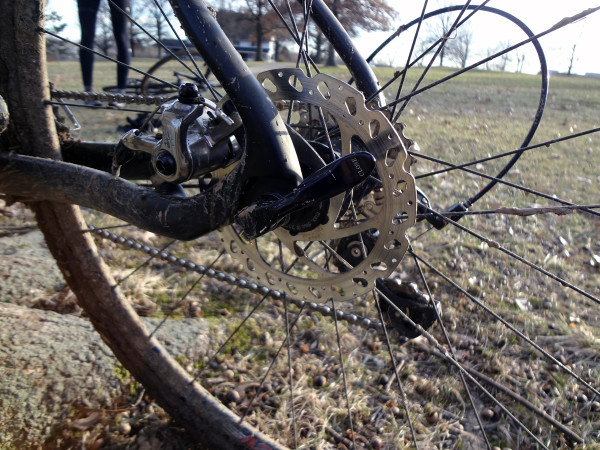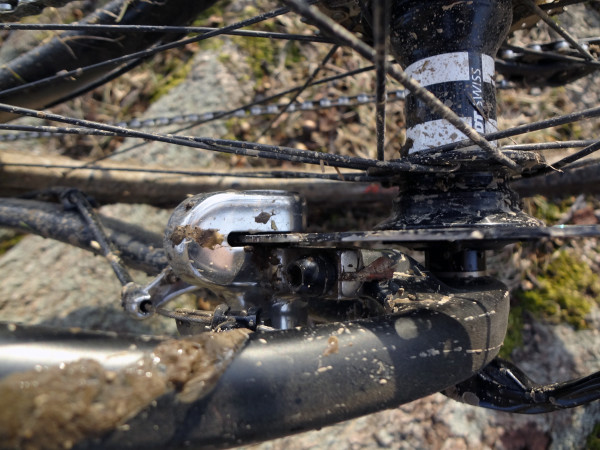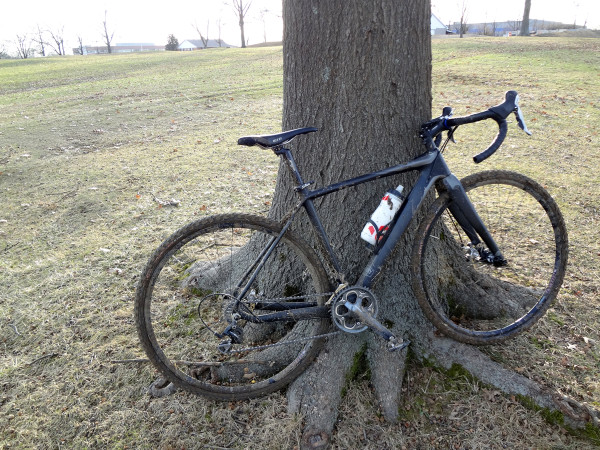Cyclocross season is over. That means it’s time to start planning and training for the upcoming cyclocross season, right? A sport of tradition, cyclocross is seeing a number of newer technologies try to take hold like disc brakes and even thru axles. The Foundry Harrow has them both. What are they like to race with? Foundry sent over a Harrow B3 cyclocross race bike for me to find out.
As many of you already know, cyclocross often doesn’t go as planned. See what I mean after the break.
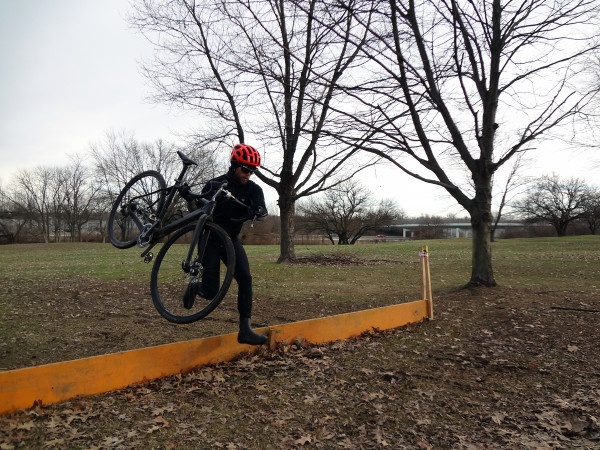
I’m sure by now you’re wondering what the hell I’m doing riding cross in so many clothes. These photos were taken after cyclocross season had ended, so it was pretty cold and we had ridden to the course, so we were really dressed for the road, not for cross. Why not take photos during an actual cross race? Well, that was the plan, until I took an unexpected digger on a different bike that resulted in a fracture of my radial head in my right arm just before the season. That meant not only no cyclocross season, but no riding, period.
Fortunately, I was able to race a few CX time trials before the crash, and got back on the bike just before the course got buried under snow. This review will have to include the caveat of only racing the Harrow in CX TTs, but there was plenty of riding to get a feel for the bike. I will be back for cross next season, hopefully with all my bones intact.
I know there are going to be people that roll their eyes when I say this, but the thru axle on the front of the bike is a nice touch. It’s really noticeable when riding off camber sections, or through frozen ruts with pinpoint accuracy. It also makes for perfect disc rotor alignment, every time. Combined with the tapered steerer, it’s as precise a front end as you’ll find on a cross bike, or even most mountain bikes.
With that said, if you are taking your racing *ahem* seriously, there is no doubt that a perfectly set up quick release will be quicker than the Maxxle style thru axle when changing front wheels. However, properly set up meaning open the QR and the wheel simply falls out past the lawyer tabs without having to unscrew the nut – pretty rare these days, especially with disc brakes. In an effort to keep disc brake wheels with QRs from ejecting from the fork under heavy braking, most forks have huge lawyer tabs that can’t really be filed off. Apples to apples, they probably each take just as long to change. As far as I can tell, the potential for added seconds changing a flat and maybe a few extra grams are the only draw backs. If you push it hard into the corners, you will appreciate the thru axle. If not, then you can probably take it or leave it.
Missing the heart of the season meant missing out on the mud CX is known for. Luckily for us, the day we decided to go take some pictures was super wet – but cold enough that the slop was freezing to the bike. The Harrow handled the mud quite well, and even after building up to the point that you could hear the rear tire rubbing on the frozen mud it kept rolling easily. If you take your cross seriously, then you’ll have a pit bike waiting for you, but its nice to know you could keep riding the Harrow lap after lap if you don’t. Without brake posts for the mud to catch on, it only accumulates on the top of the fork and CS/SS where it seems to clear itself pretty well.
In spite of the front derailleur cable exiting from the frozen muck of the rear tire, front shifting remained unaffected. You’d certainly want to clean and lube this area well after muddy races though.
One of my biggest disappointments with my review is not getting a real chance to test out the disc brakes in a race situation. They certainly worked like a champ in the TTs – I was able to out brake (and late brake) just about anyone on cantis, which was a big advantage for the course thanks to a number of tight, technical single track sections. When riding solo, it’s amazing how clean the brakes stay, when the rest of the bike is caked in mud. In a race situation this would probably change thanks to spray from other riders’ wheels, but since the brakes are centered at the hubs the seem to be mostly out of the path of any mud from the tires. I’m also happy to report that I didn’t notice my heels ever clipping the chainstays or the rear brake caliper.
Performance of the Hayes CX Pro mechanicals was never an issue. In fact, they were fantastic offering plenty of confidence inspiring, easily modulated stopping power even with 140mm rotors front and rear. Full disclosure, I’ve never been a fan of the cantilever, even when I was running some high end stoppers with aggressive pads, so it should come as no surprise that I really like discs for cross. It might be a little heavier still, but for much improved braking I’ll take it. Just remember not all disc brake hubs place the rotor in the exact same spot, so you may need to get some rotor shims to fine tune them if you have multiple sets of wheels. Yes, this is a step that isn’t needed for rim brakes, but if you have multiple sets of wheels with different rim widths, you’ll need to adjust the brakes each time you change – at least with discs once you set it up, you’re done.
For those unfamiliar with disc brakes considering it for cross, it’s important to note that there are different brake pads available for discs, just like cantis. If you race in wet, muddy conditions you’re going to want to run sintered metallic brake pads which perform much better in wet conditions, last longer, and have more bite.
Built with a 67mm bottom bracket drop for the 52cm frame size, the low BB added to the bike’s stability and I never found clipping pedals in corners to be an issue, even when riding singletrack. The 71.5° head tube angle, and 74.5° seat tube angle create a fairly aggressive seating position that is perfect for racing, but the HTA keeps the front tire out of way preventing any toe overlap – not always the case with smaller cross bikes.
Overall, the $2850 Foundry Harrow B3 is exactly what you want out of a cross bike. It’s light (even with the cheaper B3 build – 19.6lbs), it’s stiff, steers like its on rails, and still manages to eke out as much comfort as possible from the 40 ton carbon frame. While I’m super disappointed that I didn’t get to race the Harrow B3 this season, it was still a blast to ride. It’s hard to fault the Harrow, though based on comments from the first look, the blacked out paint job might be getting old for some – though covered in mud I think it still looks pretty good.
